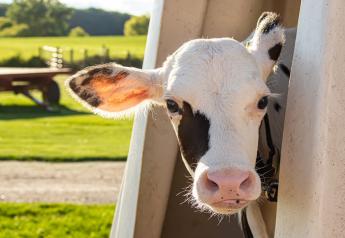5 Ways to Help Minimize Feed Refusals

High feed costs have cut deeper into dairy farmers pockets, especially as milk prices continue to sink lower and lower. According to the University of Minnesota, over the last decade, total feed costs of a dairy herd have become a better predictor of profitability than milk production. With no end to the higher feed cost trend in sight, farmers are looking at ways to get the most out of their rations while minimizing wasted feed.
While empty feedbunks are not the goal, working to reduce feed refusals is an excellent management strategy to help keep dollars in your pocketbook. Isaac Salfer, an a assistant professor of dairy nutrition at the University of Minnesota, provides five tactics to help target feed intake of cows more precisely and cut back on unnecessary waste.
Evaluate TMR Dry Matter Variation
“Variations in dry matter of forages, and subsequently the total mixed ration, are easily the largest factor contributing to differences between expected feed intake and actual feed intake,” Salfer says. “Corn silage can vary by over 10% from one day to the next, which, if not accounted for, results in overfeeding or underfeeding the diet of cows by over 5% assuming corn silage makes up approximately half of ration dry matter.”
To better account for these variations, Salfer recommends sampling the dry matter of silages as often as possible and make adjustments to the ration accordingly. He suggests taking samples once a week at the minimum and especially after weather events such as heavy rainfall.
Stick to a Consistent Feeding Schedule
We all know cows crave consistency, but research has shown that altering feeding times can lead to slug feeding, which in turn reduces daily feed intake. To help minimize refusals, it’s important to stick to a consistent schedule as much as possible.
“Keep in mind that 15 minutes of time equates to 1% of the day, so even small delays in feeding time can have large impacts on refusals due to reduced time available for cows to eat,” Salfer adds.
Group Cows
Cows who are in the beginning stage of their lactation require different nutritional needs compared to animals who are in the mid or nearing the end of their lactation. However, rations are often formulated to meet the requirements of the average cow within that group. To combat this, Salfer recommends grouping animals based on their lactation stage to help prevent animals from being either over or underfed.
“It is also valuable to have a separate fresh group fed to a higher refusal rate (4 to 5%) to prevent limiting feed intake of these cows,” Salfer says. “Intake of fresh cows will generally be less predictable as they begin to approach peak milk production.”
Measure Ingredients Accurately
You might think feeding ‘a little extra of this’ or ‘a smidge less of that’ wouldn’t make that big of a difference, but according to Salfer, it’s easy for small errors in feed loading to add up and impact the accuracy of feed offered to cows. Therefore, TMR scales should be calibrated regularly to ensure what hits the feedbunk is the same formula provided by your nutritionist.
“Batching can also help reduce the variation in dry feed ingredients at low quantities within a total mixed ration,” Salfer adds. “Using feed management software easily allows you to adjust a diet based on the number of cows in a pen and the dry matter of feeds and helps track the variability in load weights.”
Increase Feeding Frequency and Feed Push-ups
Cows are more likely to devour their feed when it is fresh. Additionally, research suggests that increasing feeding frequency from once a day to twice a day reduces sorting and increases dry matter intake, milk production and milk fat. Consider splitting your batches in half and move from feeding once a day to twice.
Similar to fresh feed, pushing up feed bunks more frequently stimulates animals to visit the feed bunk more often and limits the amount of time for cows to sort feed. Salfer states that pushing up feed more often will reduce your variability in feed refusals.
For more on nutrition, read:
- In Search of the Maternal “Goldilocks” Diet
- How Managing Forages Can Impact Feed Costs
- Cows Like Candy, Too







